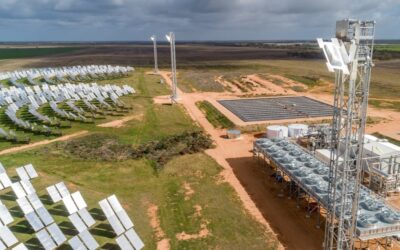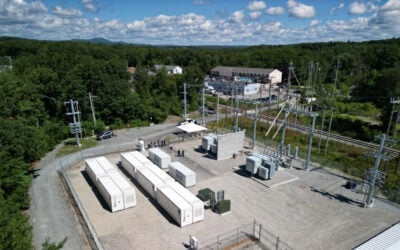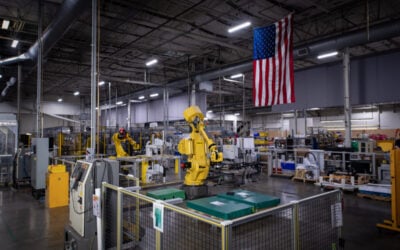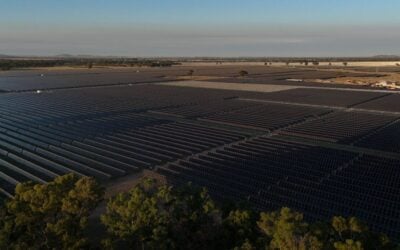
Project owners Quinbrook and Primergy have put their 1.4GWh Gemini solar-plus-storage project in Nevada online, claiming it is the largest such project in the US.
Gemini, in Clark County, pairs 690MWac/966MWdc of solar PV with a 380MW/1,400MWh battery energy storage system (BESS).
Enjoy 12 months of exclusive analysis
- Regular insight and analysis of the industry’s biggest developments
- In-depth interviews with the industry’s leading figures
- Annual digital subscription to the PV Tech Power journal
- Discounts on Solar Media’s portfolio of events, in-person and virtual
It was developed and built by investor Quinbrook Infrastructure Partners and independent power producer (IPP) Primergy Solar, which sold a 49% stake in the project to Dutch pension fund manager APG in late 2022.
Primergy reported that same year that lithium-ion battery and BESS manufacturer CATL would provide its technology for the BESS portion of the whole project, while system integrator IHI Terrasun put the project together.
“Gemini creates a blueprint for holistic and innovative clean energy development at mega scale, and we are proud to have brought this milestone project to life and to have delivered so many positive impacts across job creation, environmental stewardship, and local community engagement,” said David Scaysbrook, co-founder and managing partner of Quinbrook.
Primergy said that as part of the project it implemented an ‘unprecedented’ framework for ecosystem management, including leaving vegetation in place, matching the solar’s installation with the ground’s natural contours and reducing land footprint by 20%.
‘Largest solar-plus-storage project in the US’
Quinbrook and Primergy claimed the Gemini is the ‘largest co-located solar plus BESS project in the US’.
That claim may be contested by IPP Terra-Gen which reached full completion on its 875MWdc solar PV and 3,287MWh BESS Edwards & Sanborn solar-plus-storage project in California, at the start of this year.
Gemini could be making the claim based on the DC (direct current) size of the solar PV portion, or that it was brought online in a single phases whereas Edwards & Sanborn was brought online in multiple phases. It could also be claiming to be the largest DC-coupled solar-plus-storage project, a difference explained in the next section.
Primergy also said its US$1.9 billion financing for Gemini back in 2022 was the largest financing of its kind.
After this article was published, a spokesperson for the companies told Energy-Storage.news that Gemini was the “largest co-located, single phase solar plus storage project”.
DC-coupled architecture
The solar and BESS at Gemini are DC-coupled, which the companies said allows the BESS to charge directly from the solar and increases the efficiency and capture and storage of the solar energy. That is because the solar energy does not need to pass through a DC-AC inverter, which involves some loss of energy, to go from the solar to the BESS.
However, DC-coupling is a less flexible configuration for a solar and storage project and can result in the BESS being unable to charge from the grid. Generally, projects in the US were DC-coupled in this way as co-located BESS could not charge from the grid to qualify for investment tax credit incentives (ITCs).
However, the ITC for standalone energy storage under the Inflation Reduction Act (IRA) changed this and ended the need for such solar-charging only projects, projects which a lawyer at the time of the IRA’s passing in August 2022 described as ‘dumb’. DC-coupling has generally only been used to capture specific subsidies or incentives, with AC-coupling – generation and storage sitting independently behind a DC-AC inverter – opted for in most other market-driven use cases.
Edwards & Sanborn’s grid connection of 1.3GW – higher than its solar PV – implies it is AC coupled, meaning the solar and BESS can discharge to the grid independently of each other.
This article was amended after publication to include the company’s response around the question of what made the project the US’ largest.






